Seeking Volunteers!
The International Pickleball Federation has several open positions. Apply Today!

The International Pickleball Federation has several open positions. Apply Today!

Imagine a world where the language of pickleball is spoken by everyone, transcending borders and connecting people from every corner of the globe. This is the vision of the IPF – a vibrant tapestry woven with precision groundstrokes, joyous rallies, and the infectious laughter. Since its inception, the International Pickleball Federation has been the driving force behind a global movement, nurturing pickleball from grassroots to Olympic dreams. Our motto, "No Country Left Behind," is not just a dream but a resounding declaration.
The First Edition of The IPF 2024 Official Guide to Global Pickleball Rules is your passport to a game of fun, healthy competition, and embraced by passionate players across continents. Translated versions will follow. We have poured our hearts and souls into crafting this document in a concise and easy-to-understand manner, providing unified rules for pickleball players around the world, from recreational to professional. We also oversee global rules to ensure that the game is fair, enjoyable, and constantly evolving.
These rules are final and subject only to careful revision. Non-sanctioned tournaments can adapt these guidelines for their players' needs, while sanctioned tournaments (the basis for international rankings) will have their own separate rules that must be adhered to gain recognition from the International Olympic Committee. We want to hear your feedback, suggestions, and wild pickleball dreams. Let's transform this guide into more than just a rulebook; let it become a living, breathing testament to the passion that unites us all. Please share your thoughts with us at: rules@theIPF.org.
In the summer of 1965, on Bainbridge Island, Washington, in the United States of America, a playful pickle sprouted. Three dads – Congressman Joel Pritchard (see Figure 1), Bill Bell, and Barney McCallum – dreamt up a backyard game for their kids: PICKLEBALL! With echos of tennis, whispers of table tennis, and a sprinkle of badminton's grace, pickleball bloomed. Named after the family dog or leftover oarsmen from other teams (depending on who you ask), pickleball has become a global phenomenon, captivating players of all ages with its infectious blend of fun and friendly competition.
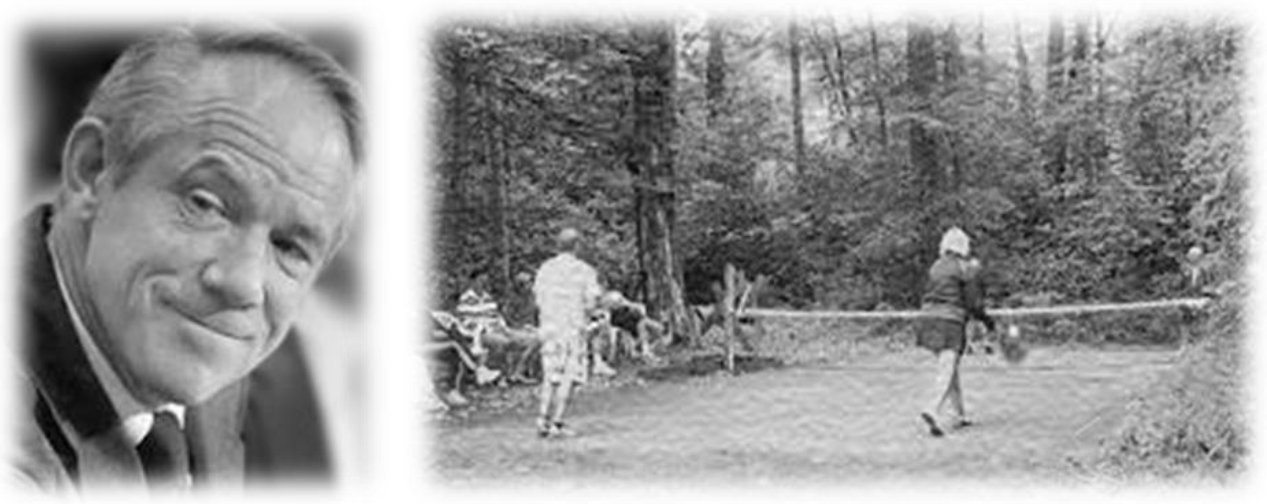
Although it has echoes of its cousin sports, pickleball sings its own tune. Picture a mini-tennis court or a double-sized badminton court with “kitchens” (non-volley zones) carved out at 2.1 m (7 feet), a lower net, a not-too-bouncy perforated ball, and paddles larger than pingpong’s – these are its instruments. There’s a special dance in the "kitchens,” serving diagonally, points ticking by side-out scoring or rally scoring (depending on where you play), and victory beckoning at 11, 15, or 21, with a two-point lead for thrilling.
This "fastest-growing sport in the world," as it is now known, is a joyful dance with its blend of skill, strategy, and pure fun, much like a summer fruit salad. Easy to grasp, social, and budget-friendly, it welcomes all slices of life: young, old, fit, or fancy-free. Whether played indoors or out, in singles or doubles, pickleball thrives on courtesy and cooperation, where a dash of sportsmanship sweetens every rally.
The low bounce, the forbidden volley zones, the gentle underhand serve – these are the spices that make pickleball sizzle. And for those who play the game while seated, a modified set of rules awaits, ensuring everyone enjoys playing the game. Wheelchair players, please consult the IPF 2024 Official Guide to Global Para Pickleball (Coming soon).
Dive deeper into the rules in the chapters to come. But remember, at its heart, pickleball is a summer's whim, a playful pickle that blossomed into a global phenomenon. So, grab your paddle and step onto the court safely. Let the fun begin! Welcome to the world of pickleball, where the IPF is more than just the global governing body; we're your partner, and we all play – and win – together!
4-1. Figure 2 illustrates pickleball paddle and balls, and Figure 3 illustrates pickleball court dimensions. For details on equipment specifications, court specifications, and other technical details related to equipment testing, please refer to the IPF Equipment Standards Manual 2023.
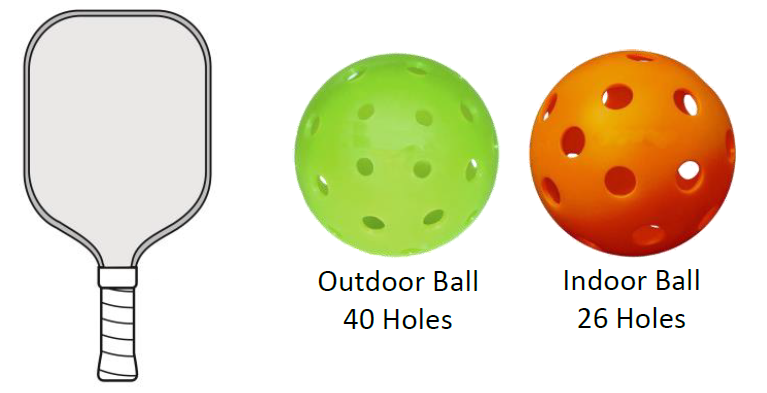
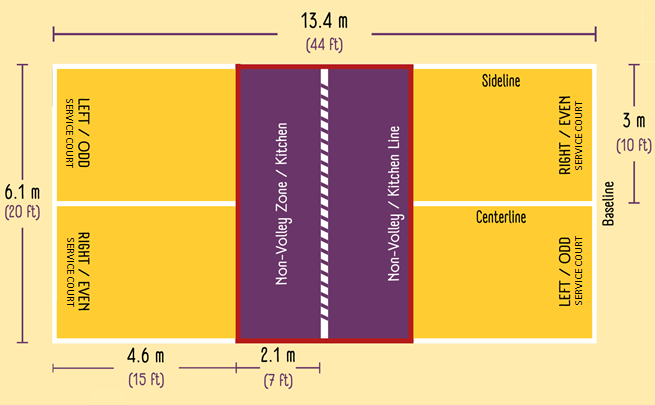
Standard pickleball court dimensions are 13.41 m long by 6.10 m wide (44 feet x 20 feet) with 0.05 m (2 inches) thickness for all lines.
A standard net height is 0.91 m (36 inches) at the sidelines (not at the net posts) and 0.86 m (34 inches) in the middle.
4-2. Apparel Guidelines – what to wear:
5-1. Around The Post (ATP): A legal shot that allows the player to return the ball with a daring curve, by passing the usual over-the-net route.
5-2. Ball in Play: When the ball is actively rallied between players, from the serve until it stops moving. (Also see 5-18. Live Ball).
5-3. Carry: A shot in which the pickleball is not hit cleanly and remains on the face of the paddle during the forward swing.
5-4. Coaching: Any form of communication from someone other than a player's partner on the court that a team may use to gain an advantage/avoid a rules violation. It is illegal except during time-outs.
5-5. Court: The playable area within the boundaries of the baselines and sidelines.
5-6. Cross-Court: The diagonally opposite side from the net where the ball was last hit.
5-7. Dead Ball: A ball that is out of play.
5-8. Distraction: Uncommon physical actions that interfere with the opponent's play.
5-9. Double Bounce: The ball hits the ground twice on one side of the net before returning it. Wheelchair players, please consult the IPF 2024 Official Guide to Global Para Pickleball (Coming soon).
5-10. Double Hits: Striking the ball twice before returning it.
5-11. Fault: A rule violation that ends a rally.
5-12. First Server (DOUBLES): The player serving from the right/even service court after a side-out, based on the team’s score.
5-13. Forfeit: A player/team gives up due to injury, illness, or penalty that award opponent(s) the game/match.
5-14. Groundstroke: Hitting the ball from midcourt or baseline, either forehand or backhand, after it bounces.
5-15. Hinder: Anything non-player interference, excluding permanent objects.
5-16. Left/Odd Court: The left service court, used by the Opening Server (in doubles) or the singles server when their score is odd.
5-17. Line Call: A loud call or hand signal made by a player or line referee to indicate that a live ball has landed outside the court.
5-18. Live Ball: The moment the referee or the server/their partner begins announcing the score. (Also see 5-2. Ball in Play).
5-19. Momentum: The force that keeps a player moving after they hit a volley. It ends when the player regains their balance and control.
5-20. Non-Volley Zone (NVZ): The 2.1 m by 6.1 m (7 ft by 20 ft) area and its bounding lines next to the net where players can't volley. The NVZ is designed to prevent powerful volleys that are difficult to return.
5-21. Officiating Team: The group in charge of enforcing regulations, and maintaining order during a match, led by the tournament Head Referee and associate referees.
5-22. Opening Server (DOUBLES): The player who serves first for their team at the open of the game.
5-23. Permanent Object: Any object on or around the court that may hinder play, such as net posts/legs, ceiling, officials, and spectators in their designated positions.
5-24. Plane of the Net: Imaginary planes extending beyond the net on all sides.
5-25. Playing Surface: The court and the area immediately surrounding used for play.
5-26. Profanity: Offensive words, phrases, or gestures.
5-27. Rally: Uninterrupted play between the serve and a fault.
5-28. Receiver: The player diagonally opposite the server who should return the serve.
5-29. Replay: A restarted rally, without points or server change.
5-30. Right/Even Court: The right service court, used by the Opening Server (in doubles) or the singles server when their score is even.
5-31. Retirement: A player/team stops playing mid-match, due to injury or strategic reasons, handing the victory to their opponent(s).
5-32. Second Server (DOUBLES): The partner of the first server, who serves after the first server loses the serve.
5-33. Serve: The opening stroke of the rally, initiating play by hitting the ball with the paddle.
5-34. Server: The player who performs the serve, following the specific rules and requirements for a service.
5-35. Service Court (Right/Left): The serving zone on either side of the centerline for starting rallies, or where the serve must land.
5-36. Serving Area: The zone behind the baseline and between the sideline and the centerline.
5-37. Side-out: When last point is lost on player/team, the serve is switched to player(s) on the other side of the net.
5-38. Technical Foul (TF): For unsporting behavior, the referee takes away a point, or gives one to the other team if the offending team has no points. This happens after either two Technical Warnings (yellow cards) or something bad enough for a Technical Foul (red card).
5-39. Technical Warning (TW): A referee's (yellow card) reminder to players to adhere to the rules and maintain proper conduct on the court. No points are taken away or given.
5-40. Verbal Warning: Referee gives a talking-to for inappropriate behavior. Each team gets one per match.
5-41. Volley: A contact with the ball before it touches the ground.
5-42. Wheelchair Player: Anyone playing pickleball in a wheelchair, regardless of disability. Their wheelchair is considered an extension of the player and subject to all relevant body-related rules.
5-43. Withdrawal: A player or team chooses to drop out of their registered tournament (before/during) for any reason.
6-1. Fundamentals of Serving:
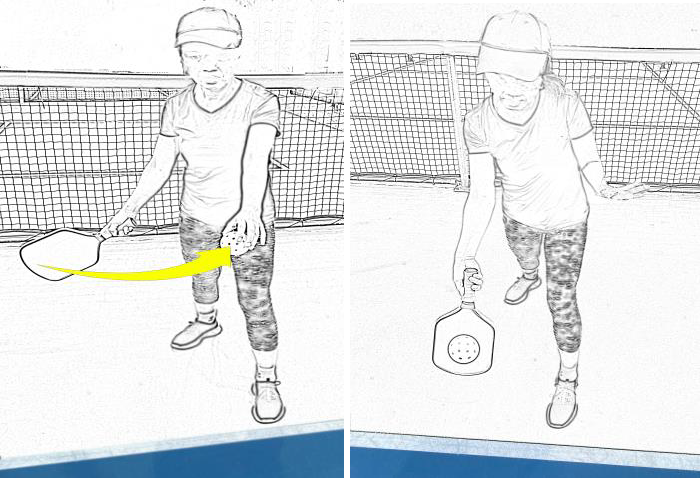
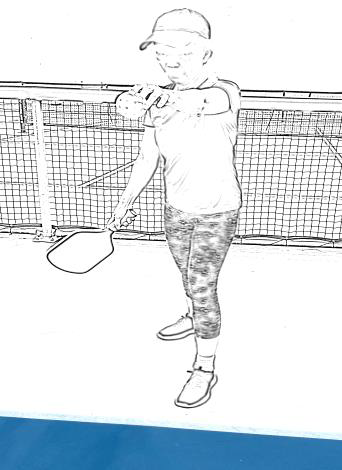
6-2. Player Positions and Side-out Scoring/Serve to Score:
6-3. Rally Scoring – Please consult the IPF Guide to Rally Scoring 2024.
7-1. Determining Initial Player/Team who Kicks off the Match:
7-2. Doubles:
7-3. Change of Ends:
8-1. Code of Ethics for Calling Lines in Pickleball:
Pickleball has rules, but it also has sportsmanship. Etiquette and fair play are key spirit. Players always aim for accuracy and favor opponent on close calls. When in doubt, call "in" and honor the opponent. After a rally, players can overrule their calls to their disadvantage.
8-2. Line Calling Responsibilities:
Players call lines on their side (except short serves, service foot faults, and NVZ faults if referees present). When unsure of their own call, they may ask the opponent's opinion, which stands if clear. Any unclear calls can be appealed before the next serve to the referee(s) or Tournament Director (if no referees), but consulting others cancel their own call of that rally. Players must loudly convey "OUT" calls (hand signal alone unacceptable).
8-3. "IN" Serve: The ball must touch the correct service box, including the lines (except for the NVZ line).
8-4. "IN" After Serve: The ball must land in the court or touches any court line.
8-5. "IN" When in Doubt: If you are not sure, call "in".
8-6. Teammates Must Agree: If there is a disagreement, "in" is the ruling.
8-7. Spectators’ Input Not Allow: Call the ball based on your own observations.
8-8. Call "OUT" Only When Certain: All “out” calls must be clear and made before the opponent hits the next ball or ball dies.
8-9. Partner communication during play not a line call. "Out" calls after bounce are line calls and subject to faults.
Instructions for Identifying Pickleballs: (see Figure 6)
9-1. Players: Only call “out” if there’s clear space between the line and the ball.
9-2. Referees: Ball must land completely outside the lines to be out.
9-3. Close calls are tough, call out only if sure.
9-4. Key points for Line Referees:
9-5. Remember, the pickleball:
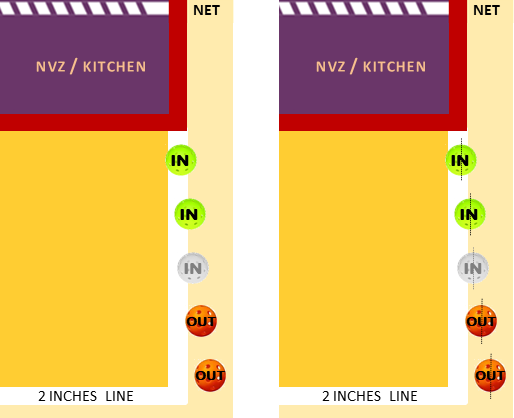
(Wheelchair players, please consult the IPF 2024 Official Guide to Global Para Pickleball (Coming soon)).
10-1. Faults:
10-2. No Faults:
11-1. Regular Time-Out (RTO):
11-2. Medical Time-Out (MTO): Need medical help? Inform referee.
11-3. Equipment Time-Out:
Gear up! Players fix equipment or wardrobe changes between games or during regular breaks. If it's crucial for safety, the referee grants a 2-minute break with no stalling. Follow Rule 11-1.d to resume.
11-4. Break Between Games:
11-5. Break Between Matches:
11-6. Uninterrupted Play:
11-7. Paused Games:
Play resumes with the same server, score, and remaining time-outs as when it was stopped due to extraordinary circumstances.
11-8. Other Rules for Time-Outs:
12-A. Play Stops (Dead Ball) When:
12-B. Play Stops (Fault) For:
13-1. Around The Post (ATP) Shot:
13-2. Ball Issues: Suspect a bad ball? Play on until the rally ends, then:
13-3. Broken Paddle: Keep playing unless it causes a fault.
13-4. Distractions: Don't distract opponents while they play. (The referee may call a fault.)
13-5. Double Hits: Two consecutive hits are allowed, but only in one fluid motion by the same player. Any break in direction, double-touch, or hitting by another player during serve or rally results in a fault.
13-6. Electronic Equipment While Competing On-Court:
13-7. Hurt During Rally: An injury does not pause an ongoing rally.
13-8. Items on the Court: Clothes or gear land on player’s side (except in the NVZ)? Play on unless the ball hits the item.
13-9. Missed Shot: Play on! The ball is alive until it bounces twice or another fault happens.
13-10. Net:
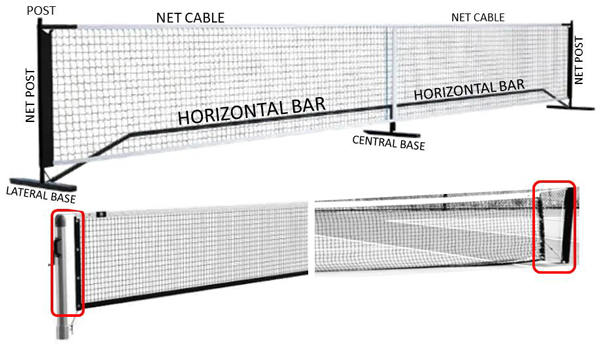
13-11. Net Posts:
13-13. One Paddle:
13-14. Switching Hands: Players can swap hands anytime.
13-15. Two-Handed Shots: Doubling up on the grip is permitted.
The International Pickleball Federation (IPF): Shaping the Rules, Igniting the Passion.
Pickleball isn't just a game; it is a community. Respect the rules, honor your opponents, and above all, cherish the joy of the game and its healthy competition. Beyond net volleys and backhand smashes, this guide thrives on a symphony of hearts and minds. To the tireless contributors, a volley of thanks for igniting the passion, crafting their countries' rules, and painting a vibrant portrait of pickleball's global heartbeat. Together, we've served up the first edition that echoes across courts worldwide. The IPF 2024 Official Guide to Global Pickleball Rules lays the foundation for enjoyable and fair play. But our journey doesn’t end here. Explore The IPF Frequently Asked Rule Questions for a deeper understanding of specific rules, enriched with detailed explanations and illustrations. Let the game, and gratitude, continue!
The next edition serves as a roadmap to the future of the international pickleball, crafted with the voices of players like you. At the IPF, we don't merely govern the game; we co-create it with you. Together, let's elevate pickleball beyond the court, the medal, the prize, creating a global phenomenon where every rally is a celebration, every dropshot a masterpiece, and every player holds a paddle to a world of endless smiles and limitless possibilities.
Dive into its depths, dissect its lines, and let your feedback resonate. Grab your paddle, unleash your passion, and join the chorus. Your voice becomes the next chapter in pickleball's global story. Please share your thoughts with us at: rules@theIPF.org.
Source: This revised rulebook is a combination of original content and adaptations from the "2022 OFFICIAL IFP RULEBOOK," which incorporated elements from the "USAPA 2010 Edition Official Pickleball Rulebook" with permission from USAPA.
International Pickleball Federation (IPF)Join today and support pickleball worldwide.
Country Membership Application